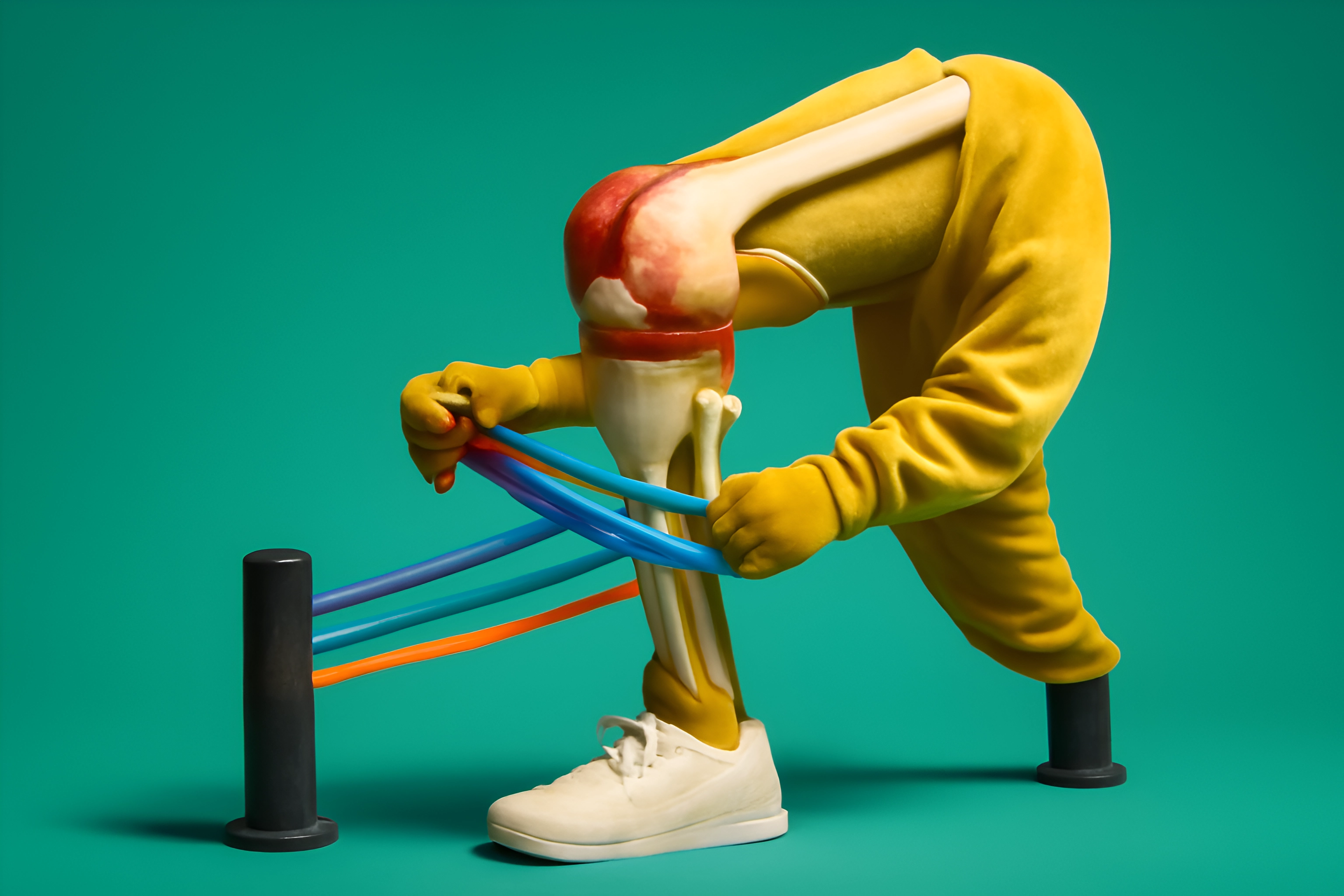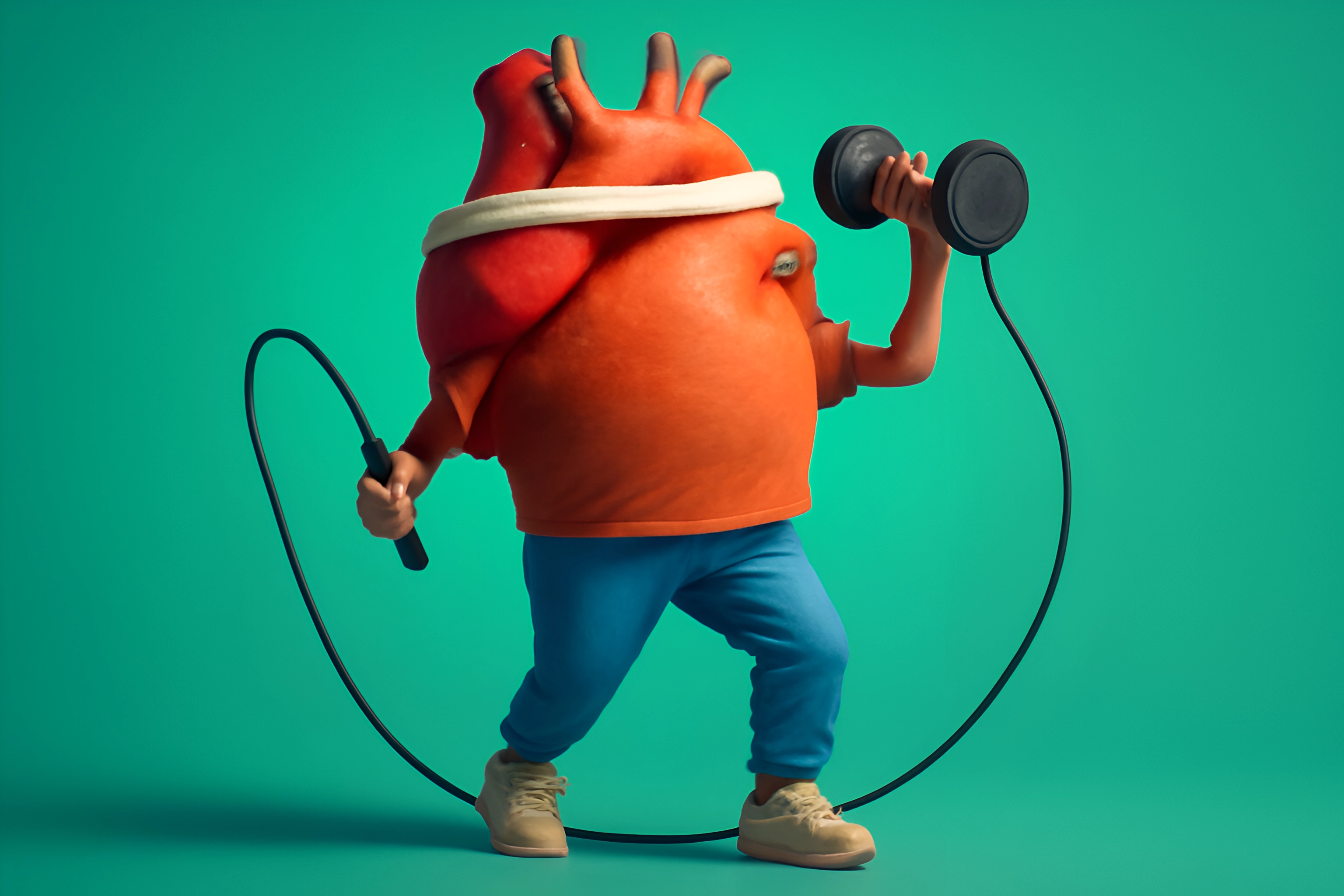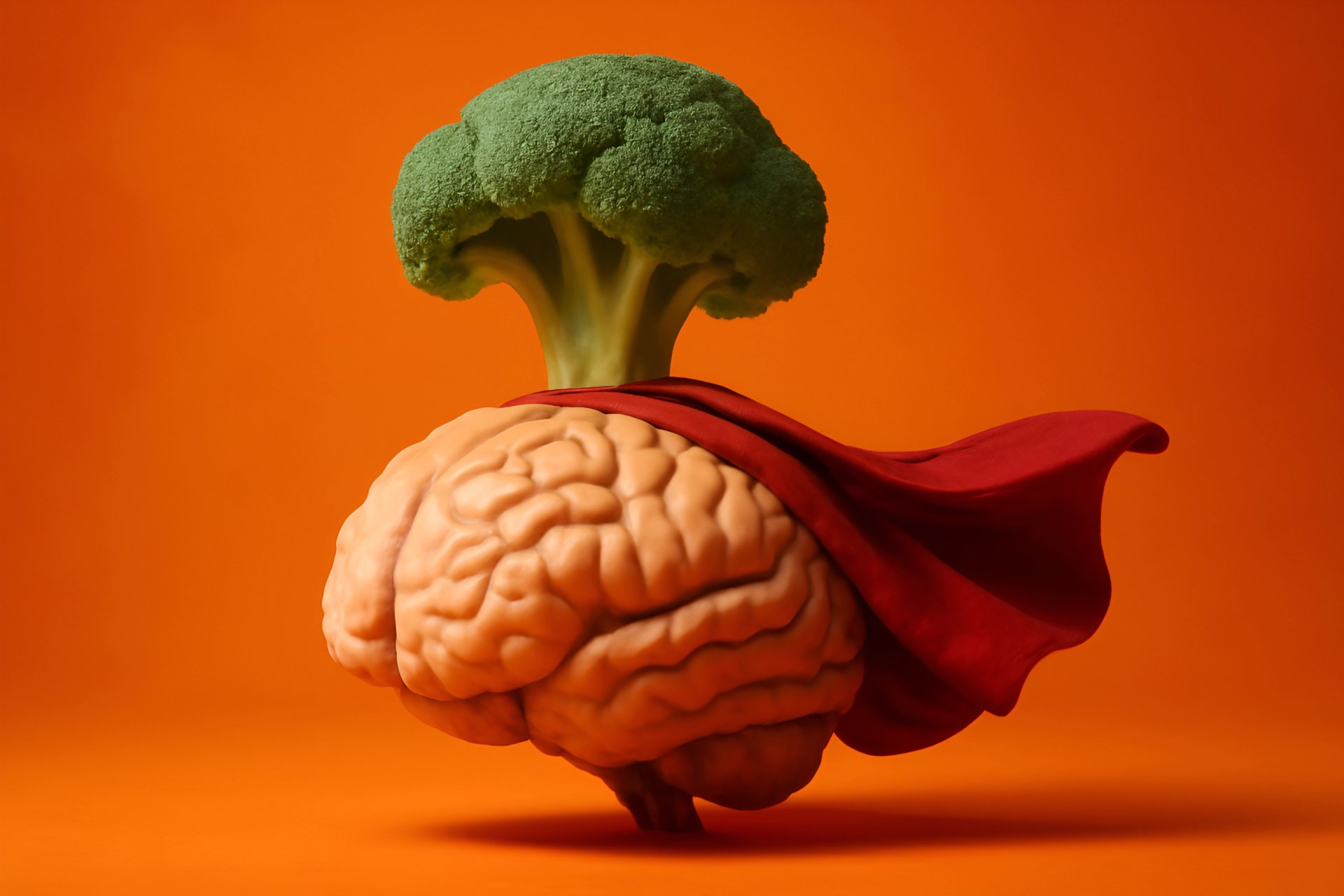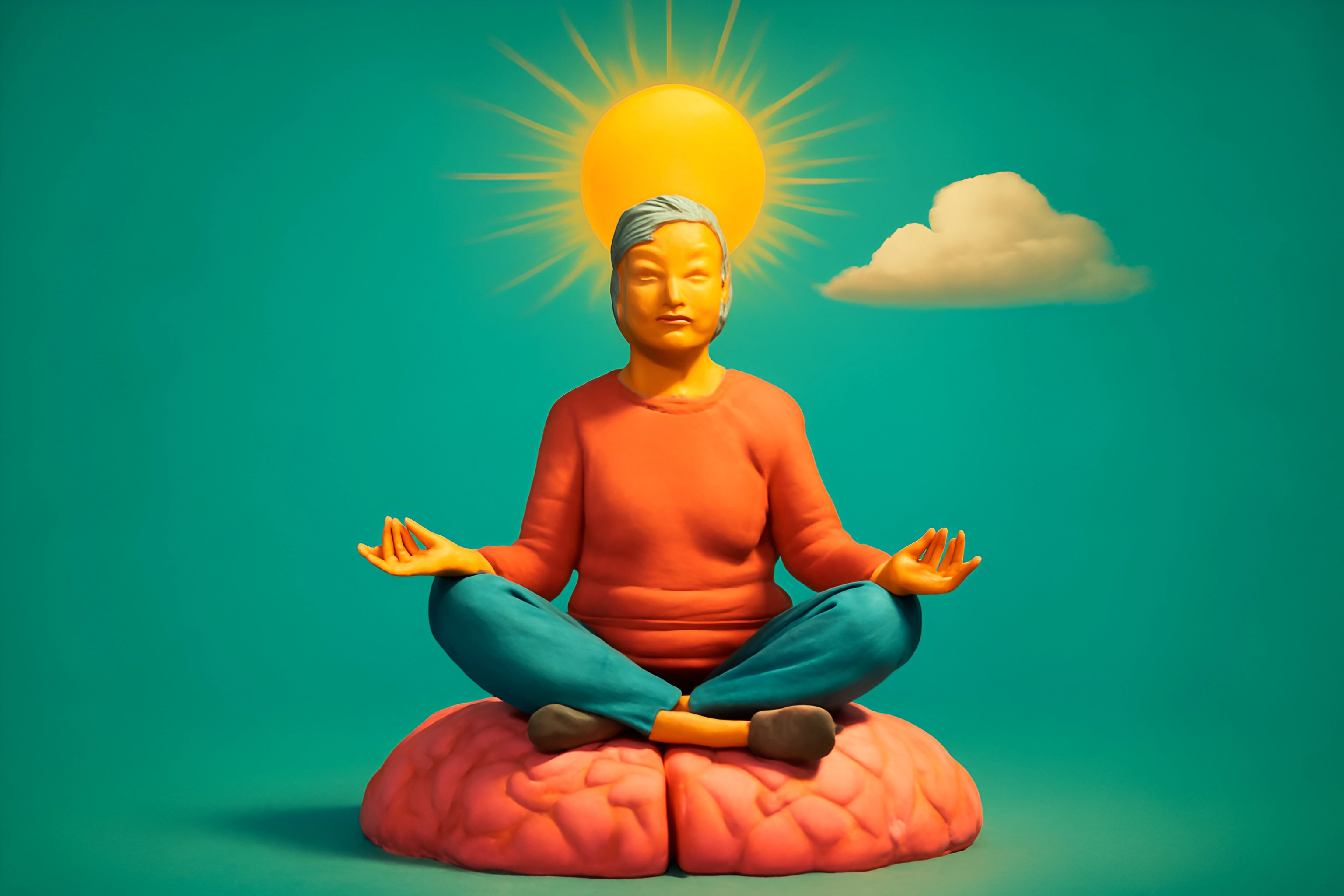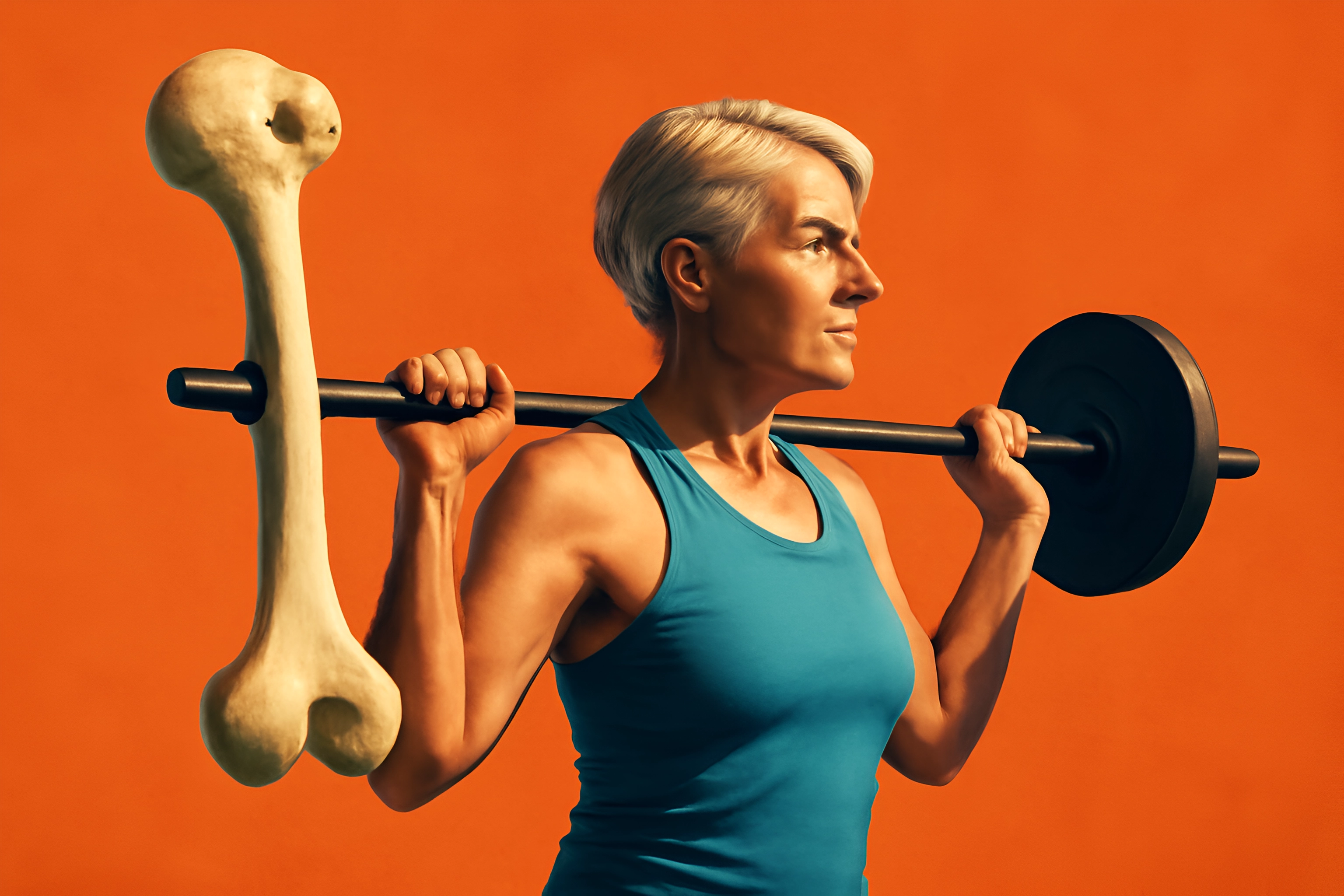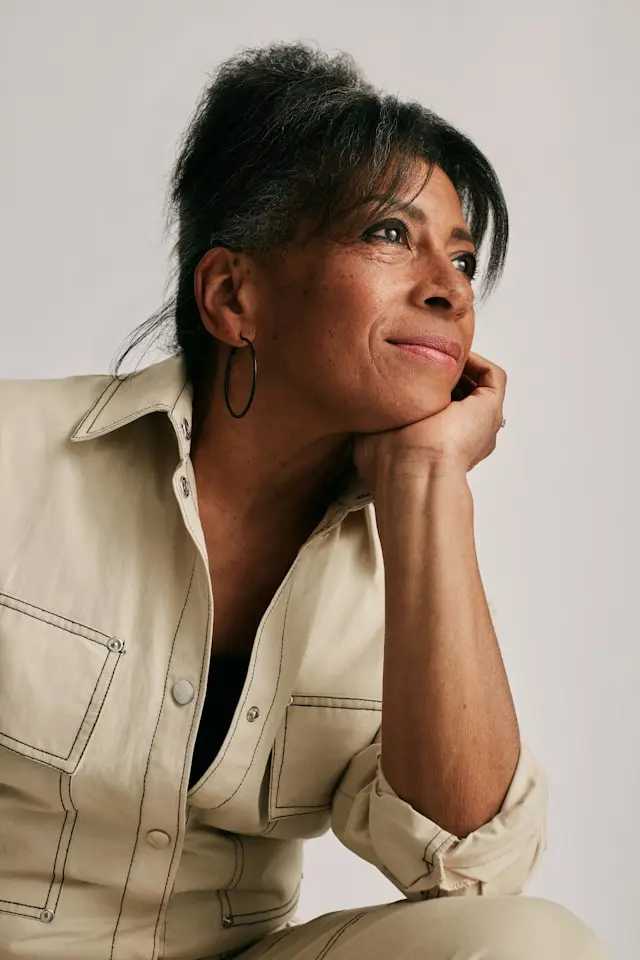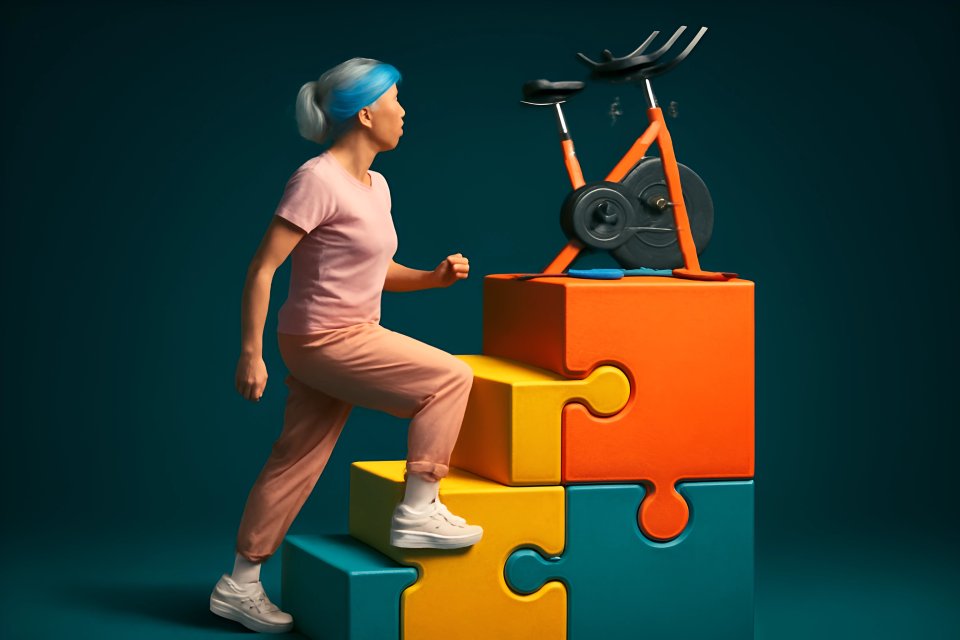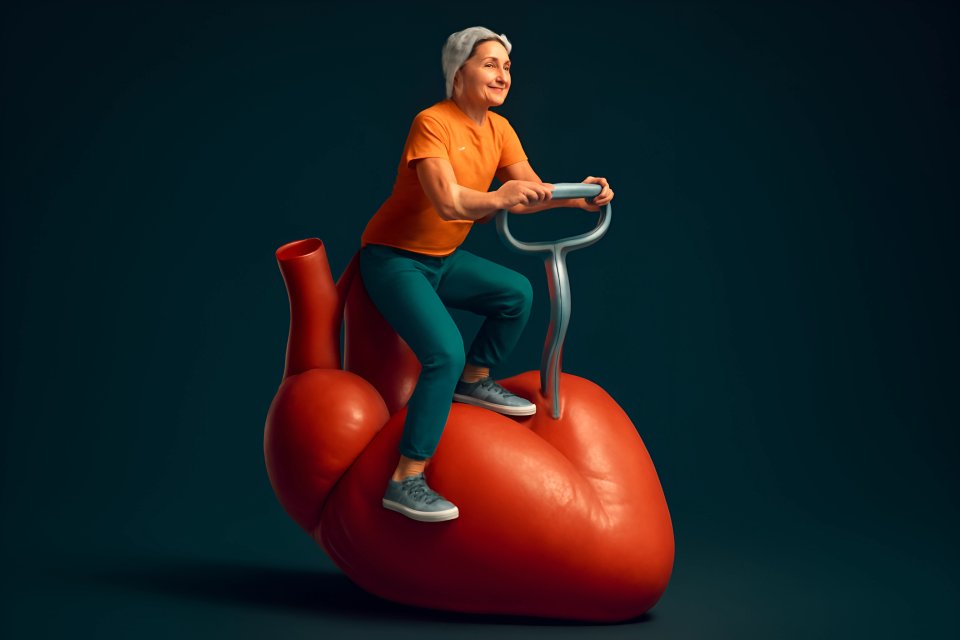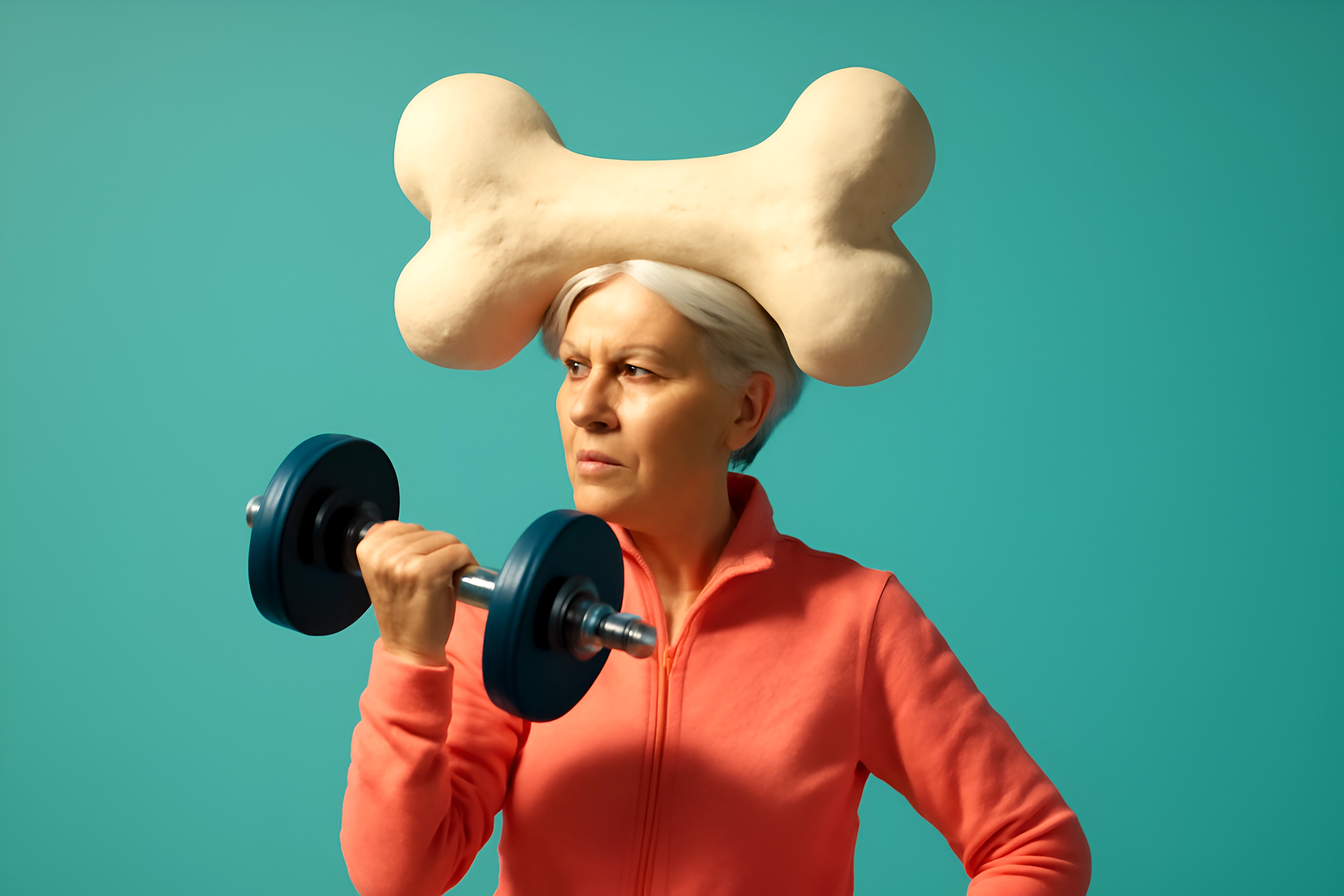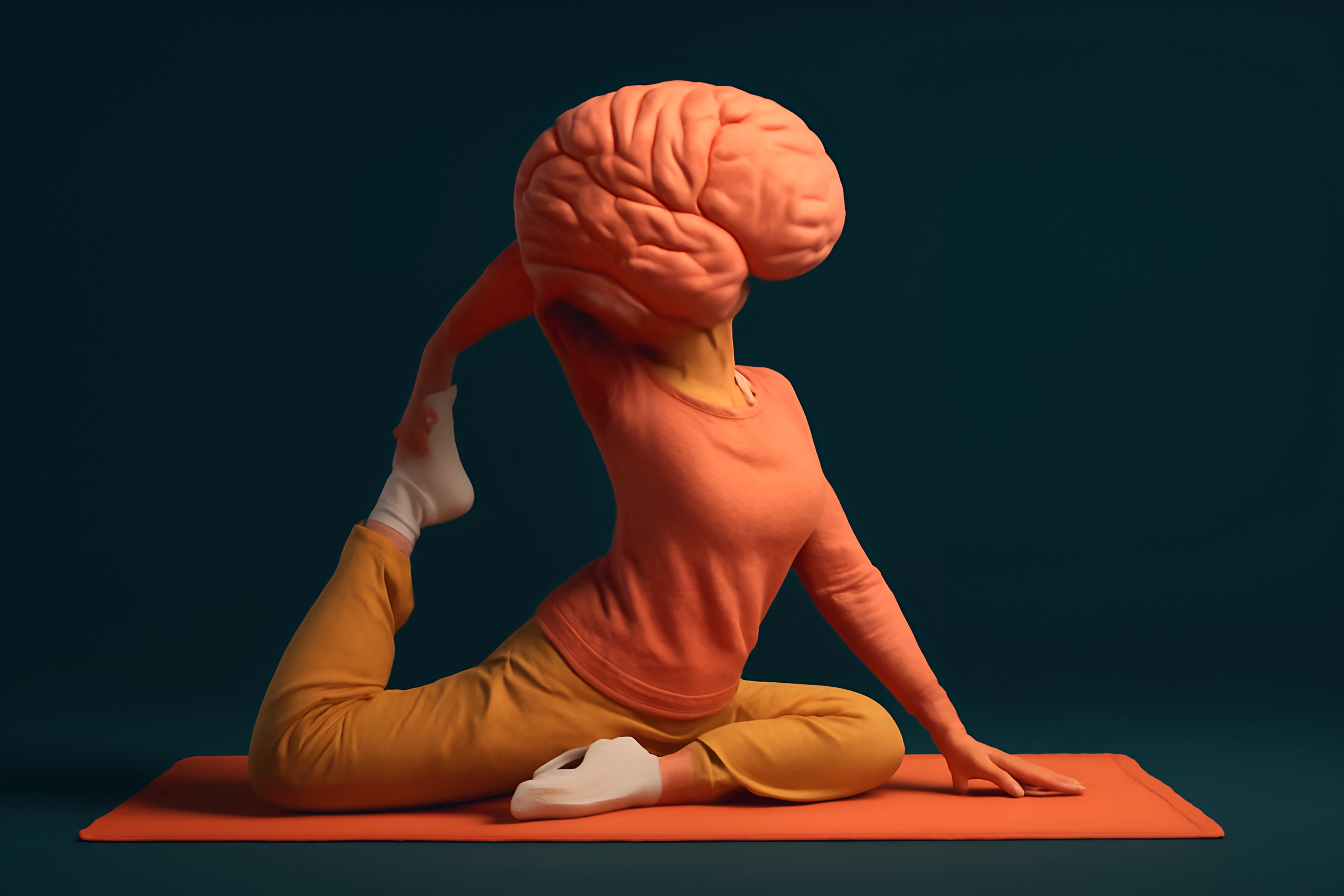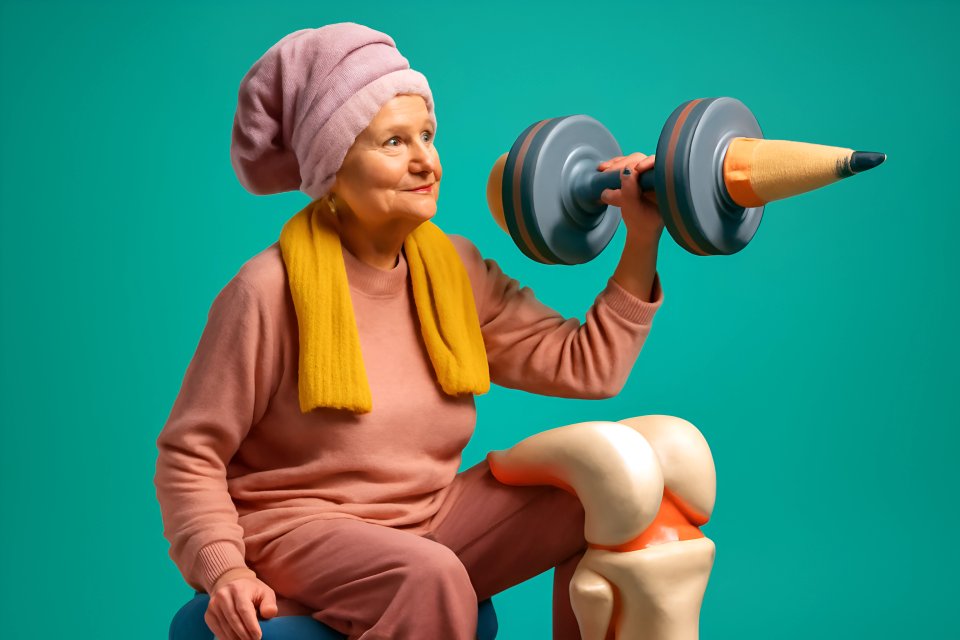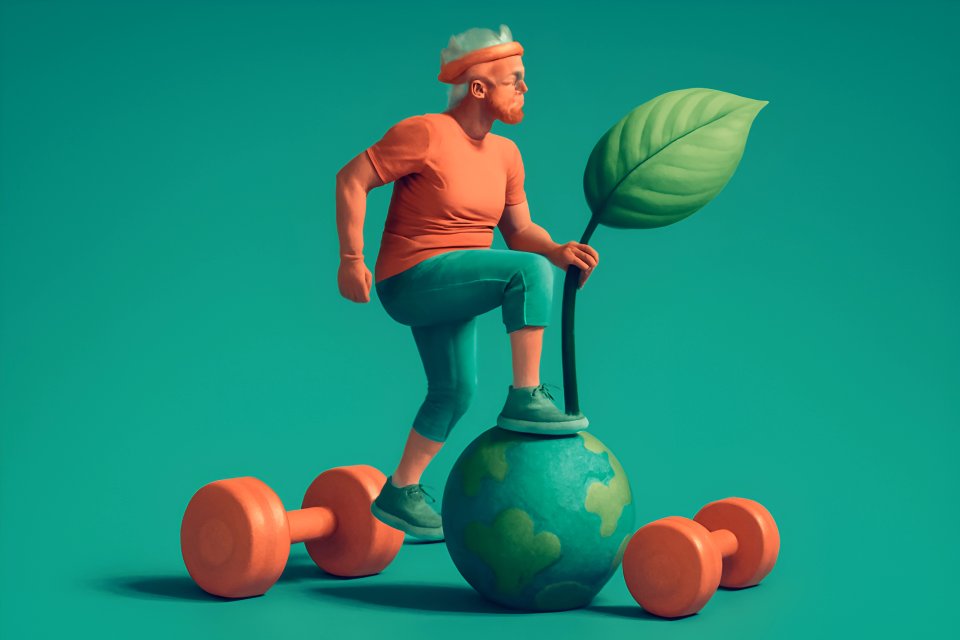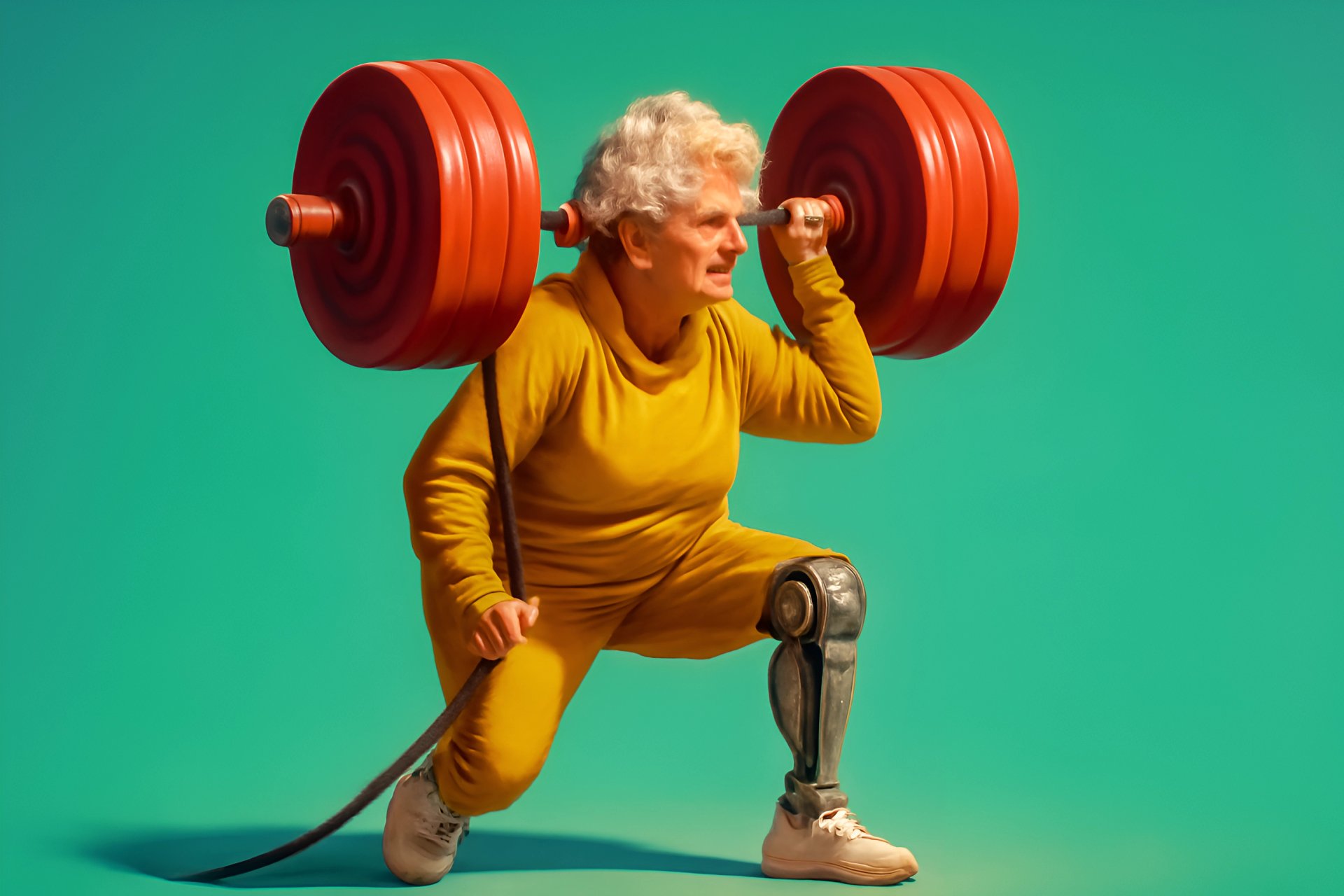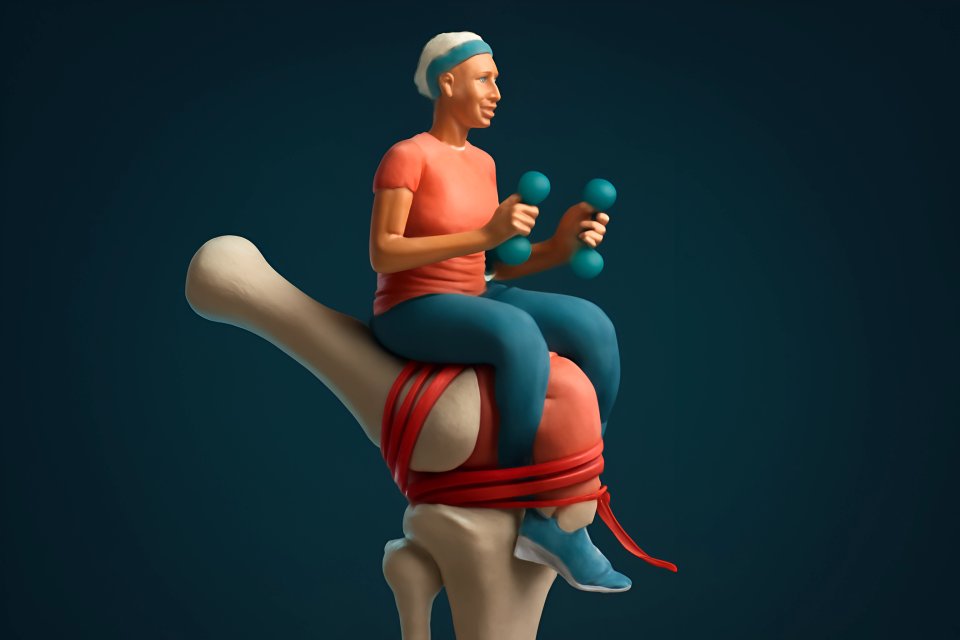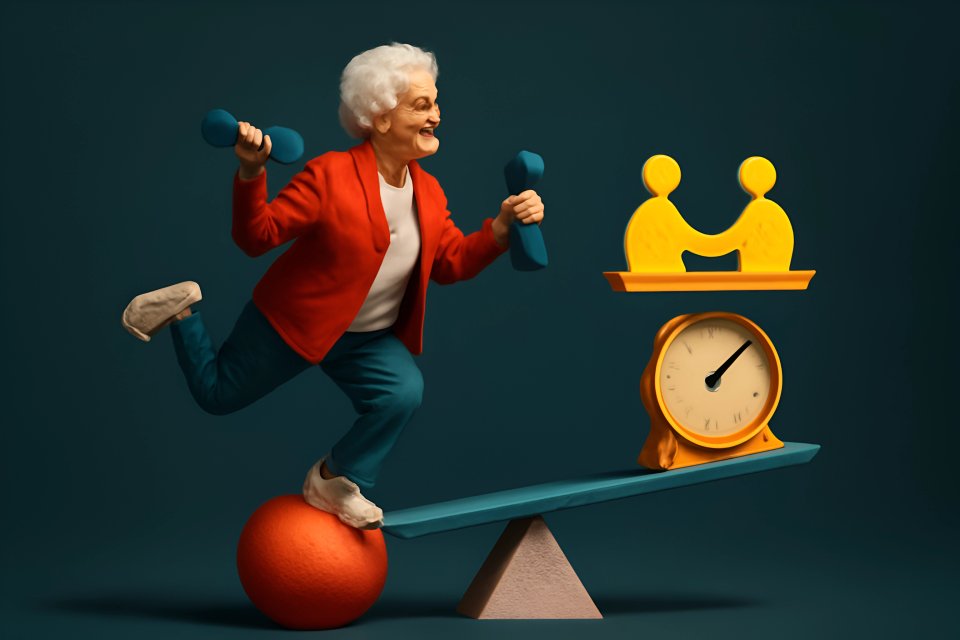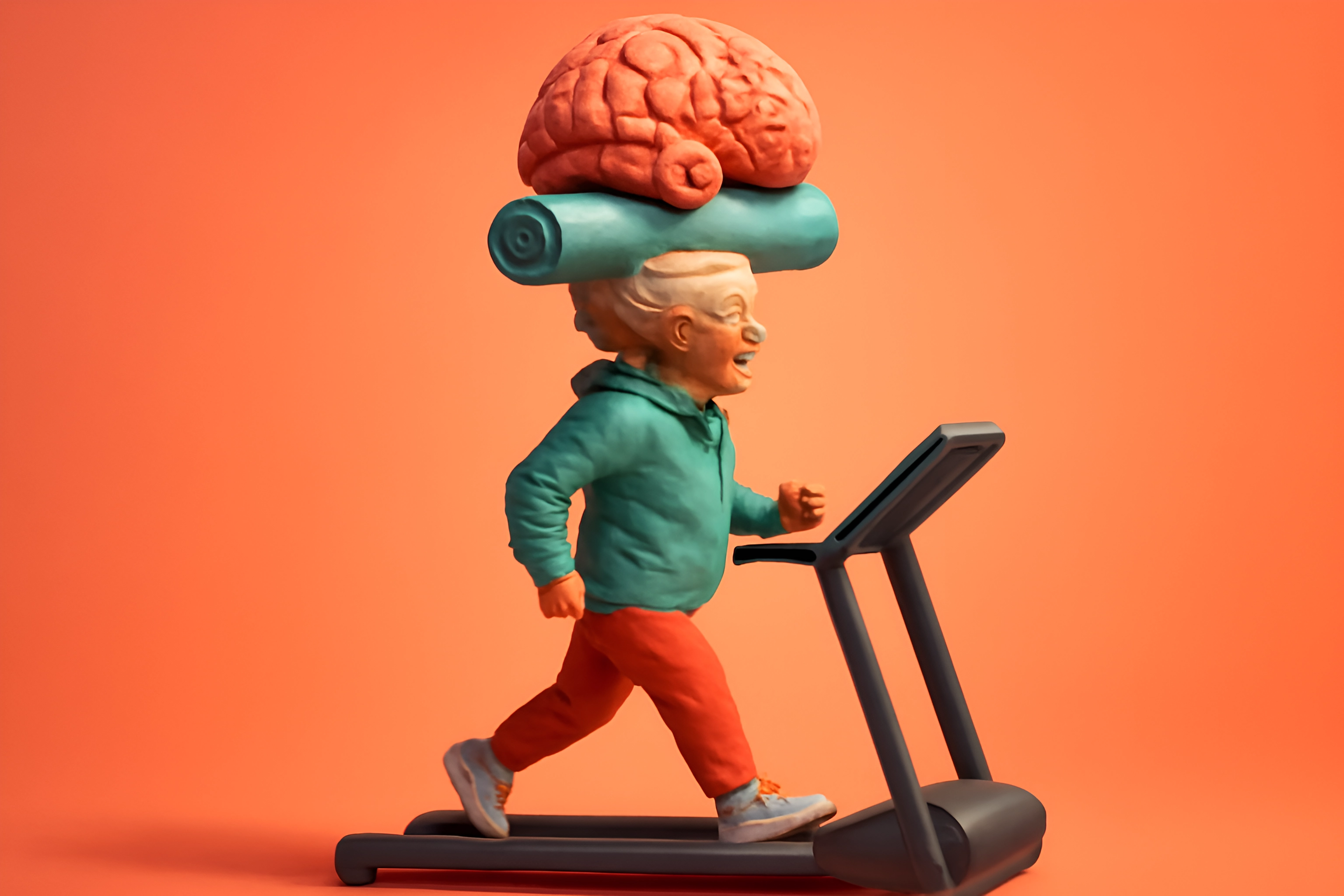
Introduction: Redefining "Aging Gracefully"
What if aging gracefully wasn’t about fighting wrinkles, but about cultivating wisdom? Not about slowing down, but about moving smarter? At FitOverFifty, we believe the secret lies in a powerful partnership: a strong body and a resilient mind. This is the ultimate guide to aging gracefully, designed not to turn back the clock, but to help you own every minute of it with power and purpose.
Too often, we treat our health like a disconnected puzzle. We tackle morning stiffness with one solution and afternoon brain fog with another, never realizing they are two sides of the same coin. This separation is the biggest pitfall on the path to vibrant aging, leaving us feeling like we're fighting a battle on two fronts instead of nurturing one integrated, powerful self.
This guide is our promise to you. We will provide a holistic framework for aging with vitality, showing you precisely why the mind-body connection is your greatest asset after 50. Forget fragmented advice; here, you will find actionable steps to strengthen your physical and mental health together, creating a virtuous cycle of energy, clarity, and resilience that will redefine what it means to thrive in your golden years.
The Science of Synergy: Why Your Brain Needs Exercise (and Vice Versa)
You feel it after a brisk walk, don't you? That sense of clarity, that lift in your spirits. This isn't just a feeling; it's powerful biology at work, proving that your muscles and your mind are in constant conversation. Understanding this synergy is the first step to unlocking a level of wellbeing you may have thought was behind you.
Exercise as Brain Food
Think of physical activity as fertilizer for your brain cells. When you move your body, you trigger the release of a powerful protein called Brain-Derived Neurotrophic Factor (BDNF), which supports the survival of existing neurons and encourages the growth of new ones, particularly in areas of the brain responsible for memory and learning. It’s no wonder that consistent exercise is one of the most effective strategies for maintaining cognitive sharpness. According to the National Council on Aging, studies show that moderate to intense exercise can slow brain aging by as much as 10 years, protecting your most precious memories and thinking skills.
Beyond building a better brain, exercise is also your body’s most potent, all-natural mood booster. Physical activity releases endorphins, those incredible neurochemicals that act as natural painkillers and mood elevators, directly combating the effects of stress and anxiety. This is the science behind that post-workout glow—a clear, tangible benefit that proves the deep connection between mental wellbeing and exercise over 50.
The Virtuous Cycle
Here’s where the magic truly happens. When you feel good mentally—clear-headed, positive, and motivated—you are far more likely to stick with an exercise routine. This creates a powerful upward spiral: your positive mindset fuels your physical activity, and that activity, in turn, enhances your mental state. Research consistently shows that older adults who engage in regular physical activity report higher life satisfaction and better psychological well-being than their inactive peers.
Conversely, a low mood or a foggy mind can make the thought of exercise feel overwhelming, leading to inactivity. This inactivity can then worsen your mood, drain your energy, and create a downward spiral that is difficult to break. Recognizing this pattern is crucial; by taking one small step to move your body, you are simultaneously taking a giant leap toward a more resilient and positive mind.
Expert Insight
As Dr. Evelyn Reed, a leading Geriatric Psychologist, often states, "We often see that patients who engage in mindful movement practices, like Tai Chi or even focused walking, report lower stress levels and fewer physical complaints. The simple act of connecting breath to movement calms the nervous system and empowers individuals to feel in control of their own wellbeing, which is a cornerstone of graceful aging."
The Mental Wellbeing Toolkit: Strategies for a Resilient Mind
Building a resilient mind doesn't require hours of meditation on a remote mountaintop. It begins with small, consistent practices that you can weave into the fabric of your daily life. These are your tools for managing stress, sharpening your focus, and cultivating a mindset that sees age not as a limitation, but as a source of strength.
The 5-Minute Mindfulness Habit
One of the most powerful tools at your disposal is your own breath. Mindfulness isn't about emptying your mind; it's about paying attention to the present moment without judgment, which has been shown to lower cortisol, the body's primary stress hormone. You can start right now with a simple technique called "Box Breathing." For a deeper dive into these practices, explore these mindfulness techniques for managing anxiety in the golden years.
Here is how you do it:
1. Inhale slowly through your nose for a count of 4.
2. Hold your breath for a count of 4.
3. Exhale slowly through your mouth for a count of 4.
4. Hold your breath for a count of 4.
5. Repeat for 2-5 minutes.Cultivating a Pro-Aging Mindset
What story are you telling yourself about aging? Our internal narrative has a profound impact on our physical and mental health. Internalizing negative stereotypes can become a self-fulfilling prophecy, while embracing a positive, pro-aging mindset is linked to better health outcomes and increased longevity. One of the best ways to shift this narrative is through a daily gratitude practice focused on your body.
Instead of focusing on aches or limitations, take a moment each evening to write down three things your body allowed you to do that day. Did your hands help you tend to your garden? Did your legs carry you on a walk with a friend? This simple act reframes your relationship with your body from one of conflict to one of appreciation and partnership. For more on this, see our guide on practical mindset shifts for healthy aging.
The Power of Purpose and Connection
Humans are social creatures, hardwired for connection and purpose. Feeling isolated is a significant risk factor for both cognitive decline and depression in older adults. Conversely, maintaining strong social ties and a sense of purpose are pillars of aging gracefully tips. A 2024 study in Frontiers in Public Health found that physical exercise improves mental health in older adults both directly and indirectly by enhancing social competence.
Make connection a non-negotiable part of your week. Join a local walking group, sign up for a class at the community center, or volunteer for a cause you believe in. These activities not only keep you physically active but also provide the vital social interaction and sense of contribution that feed a healthy mind. Discover more about balancing social wellbeing and physical health with community fitness.
The Practical Exercise Blueprint: Building a Body for Life
An effective fitness plan after 50 isn't about pushing for personal bests; it's about building a resilient, capable body that allows you to live life on your own terms. The goal is sustainability, safety, and a feeling of empowerment. This blueprint is built on four essential pillars that work together to create a foundation of lifelong active fitness.
The Four Pillars of Fitness After 50
A balanced routine is your best defense against injury and your best tool for comprehensive health. First is Cardio, the engine of your health. Activities like brisk walking, swimming, or cycling strengthen your heart, improve circulation, and deliver oxygen-rich blood to your brain. Second is Strength Training, your key to independence. Using resistance bands, light weights, or even your own bodyweight for exercises like squats and push-ups builds muscle and, crucially, maintains bone density.
The third pillar is Flexibility & Mobility, your ticket to moving freely and without pain. Practices like dynamic stretching and gentle yoga reduce stiffness and are essential for preventing injury. Finally, Balance is your foundation for safety. As we age, balance training becomes non-negotiable for fall prevention. Simple practices like single-leg stands or the flowing movements of Tai Chi can dramatically improve your stability and confidence. For a detailed look at safe and effective routines, check out our ultimate guide to joint-friendly exercise.
Sample Weekly "Mind & Body" Schedule
To bring it all together, here is a sample schedule that integrates the four pillars with the mental wellbeing practices we've discussed. This isn't a rigid prescription, but a template to inspire your own routine. The key is consistency, not intensity.
| Day | Body Activity (30-45 mins) | Mind Practice (5-10 mins) |
|---|---|---|
| Monday | Brisk Walk (Cardio) | Post-Walk Gratitude Journaling |
| Tuesday | Full-Body Strength (Resistance Bands/Bodyweight) | Box Breathing Before Workout |
| Wednesday | Gentle Yoga or Tai Chi (Flexibility/Balance/Mind) | (Integrated into the practice) |
| Thursday | Cycling or Swimming (Cardio) | Mindful Observation of Surroundings |
| Friday | Strength & Balance Practice (e.g., Lunges, Leg Stands) | Set an Intention for the Weekend |
| Weekend | Active Rest (Gardening, Social Walk, Dancing) | Connect with a Loved One |
The Integration in Action: Weaving Mind and Body into One Practice
This is where we move beyond theory and into transformation. The true power of this approach lies not in doing a workout and then a meditation, but in weaving them together into a single, seamless practice of self-care. This is how you turn exercise from a chore into a cherished ritual.
Mindful Movement: Turn Your Walk into a Meditation
Your daily walk is a perfect opportunity to practice mindful movement. Instead of putting in headphones and zoning out, tune in to your body and your surroundings. Feel the solid earth beneath your feet with each step. Notice the rhythm of your breath as it syncs with your pace. Pay attention to the sights, sounds, and smells around you—the rustle of leaves, the warmth of the sun, the scent of rain on the pavement.
By shifting your focus from "getting it done" to simply "being there," you transform a physical exercise into a powerful mental one. This practice calms the nervous system, sharpens your senses, and anchors you firmly in the present moment. It’s a simple shift that doubles the benefit of every step you take.
Habit Stacking for Success
The secret to building new habits is to attach them to existing ones. This concept, known as "habit stacking," removes the friction of starting something new by making it an automatic extension of your current routine. The formula is simple:
After I [EXISTING HABIT], I will [NEW INTEGRATED HABIT].For example: "After I finish my morning coffee, I will do my 10-minute stretching and breathing routine." Or, "After I put on my walking shoes, I will set an intention for my movement today." By linking the new behavior to an established one, you are far more likely to remain consistent. For a complete roadmap, explore our step-by-step guide to building a daily healthy habits routine over 50.
Set an Intention, Not Just a Goal
Goals are about the destination; intentions are about the journey. A goal might be "walk 3 miles," which can feel like a task to be checked off a list. An intention, however, reframes the entire experience. An intention sounds like, "Today, I will move my body with energy and appreciation," or "My intention for this yoga practice is to be kind to my joints."
Setting an intention shifts your focus from performance to presence. It transforms your workout from something you have to do into an act of self-respect and care. This small mental shift is one of the most powerful ways to ensure your senior mindfulness and fitness journey is joyful, sustainable, and deeply rewarding.
Conclusion: Your Journey to Graceful Aging Starts Now
True vitality after 50 isn't found in a magic pill or an anti-aging cream. It is forged in the powerful, undeniable connection between a body that is cared for and a mind that is nurtured. It’s about honoring the synergy between your physical strength and your mental resilience, and understanding that one cannot fully thrive without the other.
Aging gracefully is an active, joyful practice—not a destination. It is a choice you make every day with every mindful step and every intentional breath. By taking one small step for your body and one deep breath for your mind today, you are investing in a future filled with strength, clarity, and the unwavering confidence that comes from being truly at home in your own skin.
What is your favorite way to combine mental and physical wellness? Share your top tip in the comments below to inspire our FitOverFifty community.
